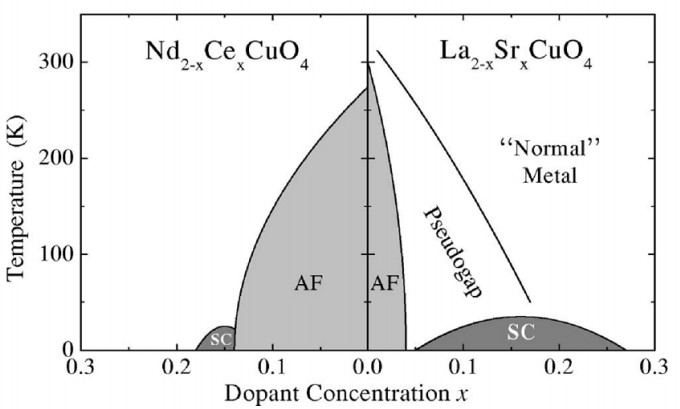Introduction to Cuprates
1.Lattice structures
Basically, most of the Cuprates contain one or more Cu-O planes. And these Cu-O
planes are regarded as the conducting plane where superconductivity takes place.
2.Phase diagram
Separated by the dopant, Cuprates are mainly divided into two categories: electron
doped Cuprates and hole doped Cuprates. The overall phase diagram of Cuprates
looks like a ―dome‖ with the highest Tc point locating at the optimally doping level.
Accordingly, we call the region with less dopant concentration as under-doped region
while the one with more dopant concentration named as over-doped region.
3.Our recent contributions on Cuprates:
1) Disappearance of Nodal Gap across the Insulator-Superconductor Transition in a
Copper-Oxide Superconductor
The electronic structure of the lightly-doped Bi2Sr2-xLaxCuO6+δ exhibit a number of
characteristics: existence of an energy gap along the nodal direction, d-wave-like anisotropic energy gap along the underlying Fermi surface, and coexistence of coherence peak and a broad hump in the photoemission spectra. Our results reveal a clear insulator-superconductor transition at a critical doping level of ~0.10 where the nodal energy gap approaches zero, the three-dimensional antiferromagnetic order disappears, and superconductivity starts to emerge. These observations clearly signal a close connection between the nodal gap, antiferromagnetic insulating phase, and high temperature superconductivity.
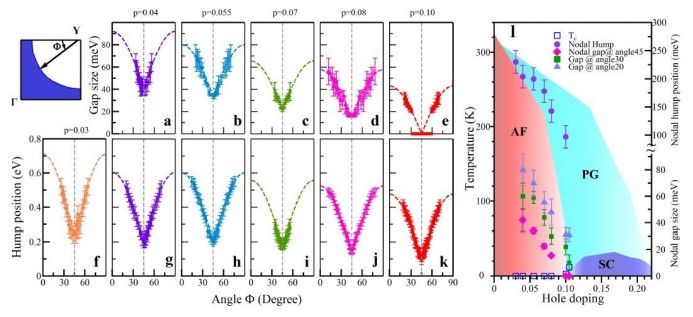
Y.Y.Peng, X.J.Zhou* etc. Nature Communications|4:2459|DOI:10.1038/ncomms3459(2013)
Two coexisting energy scales are clearly revealed over a large momentum space for the first time in the superconducting state of overdoped Bi2212 superconductors. These observations provide a new picture on momentum evolution of electron-boson coupling in Bi2212 that electrons are coupled with two sharp modes simultaneously over a large momentum space in the superconducting states. Their unusual momentum dependence poses a challenge to our current understanding of electron-mode-coupling and its role for high temperature superconductivity in cuprate superconductors.
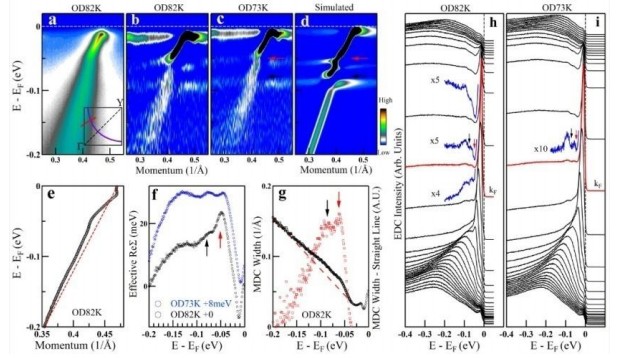
J.F.He, X.J.Zhou* etc. Physical Review Letters 111, 107005(2013)
We report ARPES measurements of La-Bi2201 that give direct evidence of the Fermi pocket.
The charge carriers in the pocket are holes and the pockets show an unusual dependence upon doping, namely, they exist in underdoped but not overdoped samples. A big surprise is that these Fermi pockets appear to coexist with the Fermi arcs. This coexistence has not been expected theoretically and the understanding of the mysterious pseudogap state in the high-Tc cuprate superconductors will rely critically on understanding such a new finding.
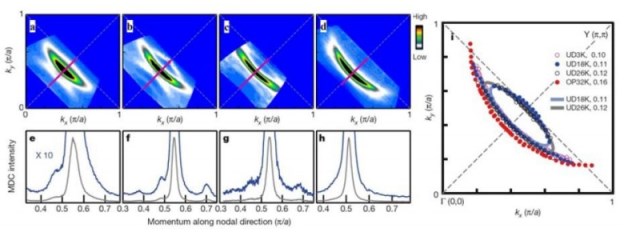
J.Q.Meng, X.J.Zhou* etc. Nature, 462, 335 (2009)
Momentum dependent measurements on Bi2212 provide new insights on the nature of high
energy kink at 200~400 meV and high energy dispersions. The strong dichotomy between the
MDC- and EDC-derived bands is revealed which raises critical issues about its origin and
which one represents intrinsic band structure. The MDC-derived high energy features are
affected by the high-intensity valence band at higher binding energy and may not be intrinsic.
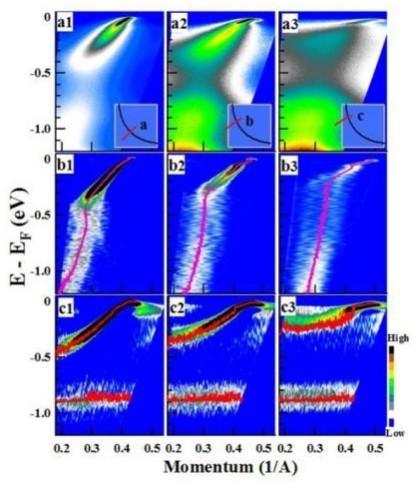
W.T.Zhang, X.J.Zhou* etc. Physical Review Letters 101, 017002 (2008)
New high energy features at ~115 meV and ~150 meV, besides the prominent ~ meV one, are
found to develop in the nodal electron self-energy in the superconducting state of Bi2212. These high energy features, which can not be attributed to electron coupling with single
phonon or magnetic resonance mode, point to the existence of a new form of electron
coupling in high temperature superconductors.
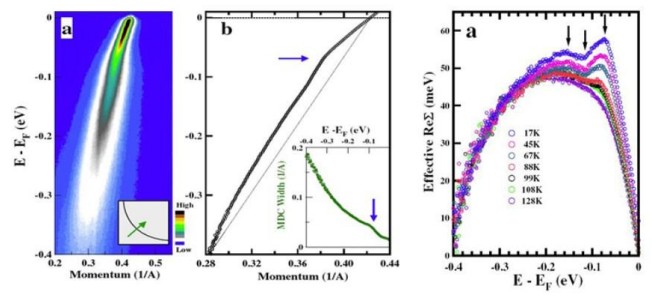
W.T.Zhang, X.J.Zhou* etc. Physical Review Letters 100, 107002 (2008)


